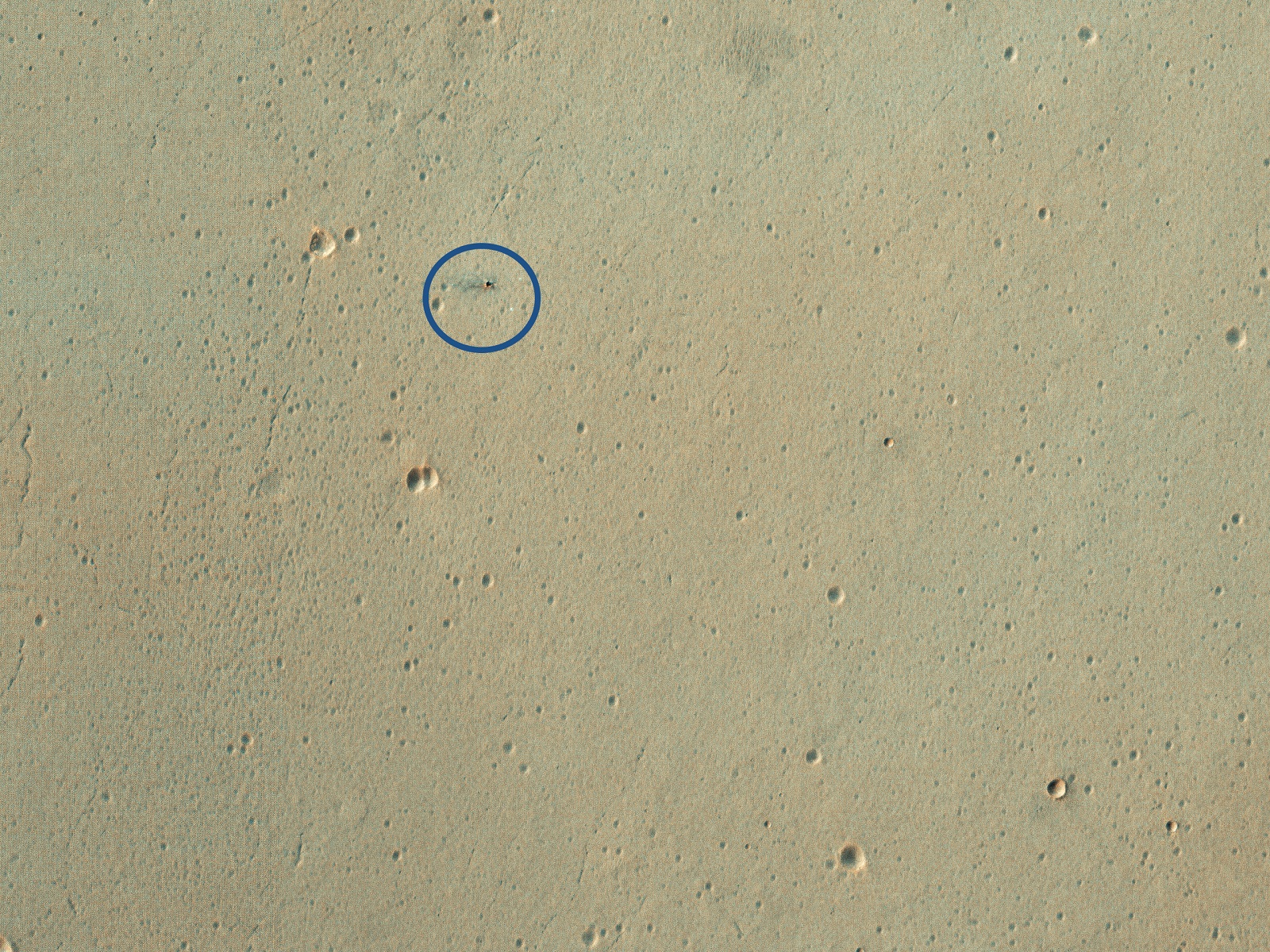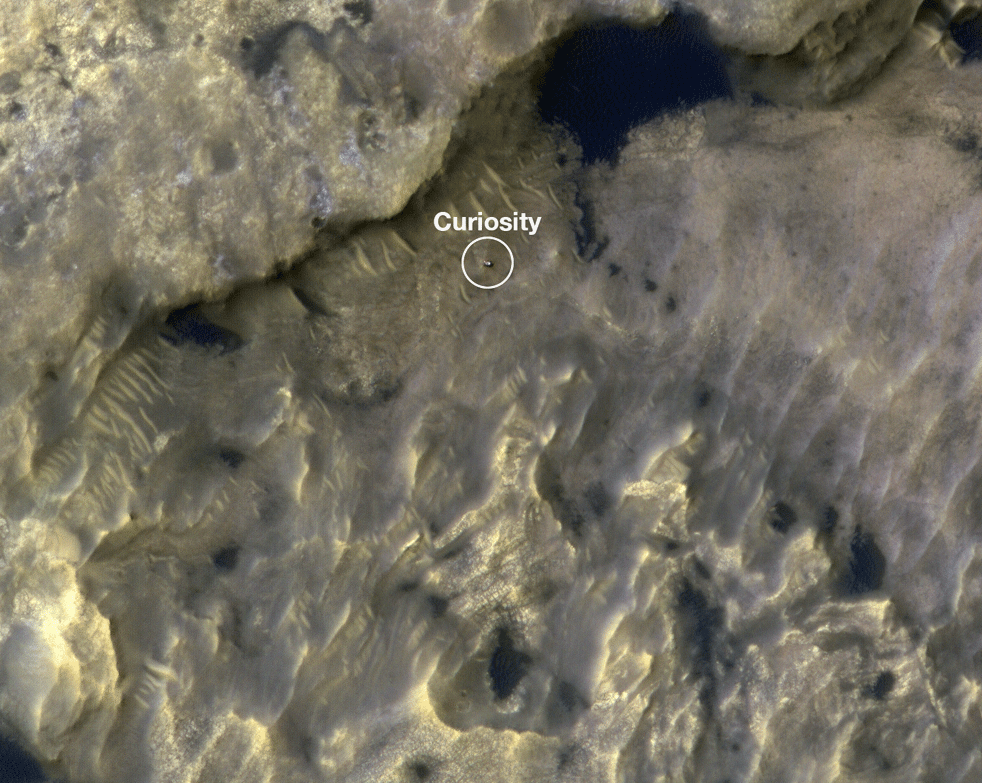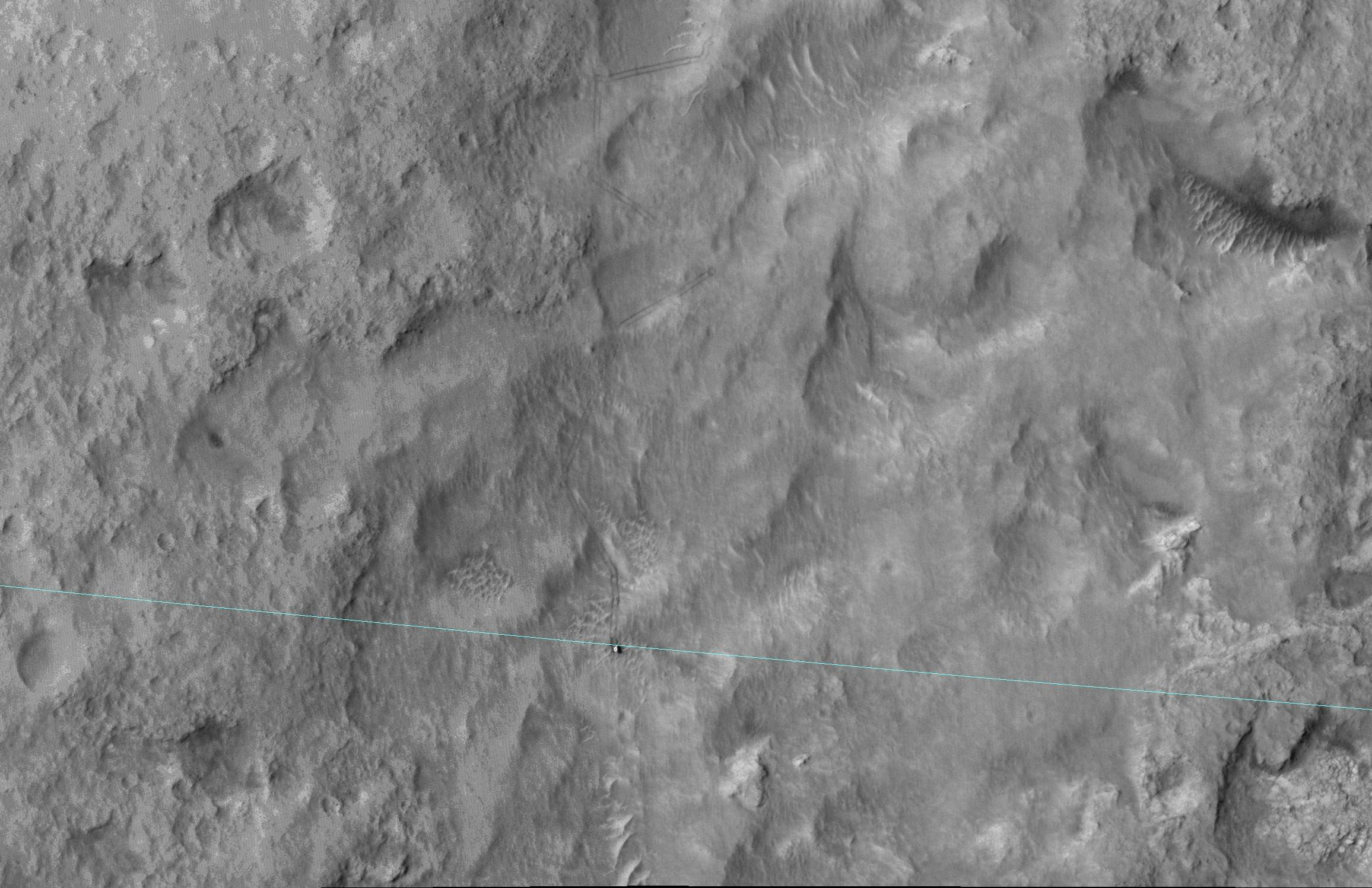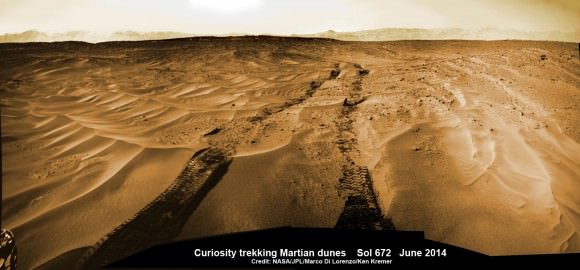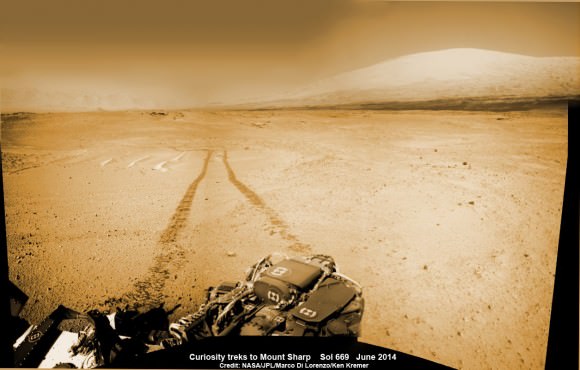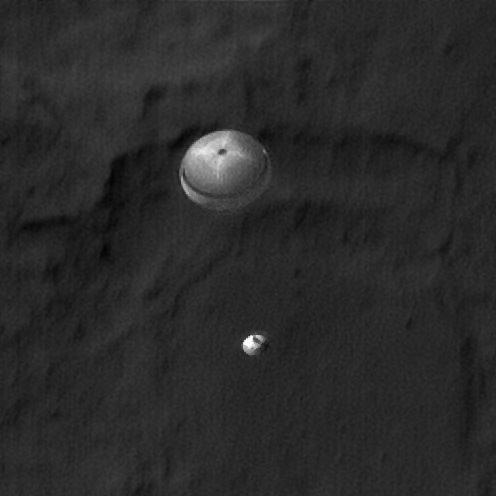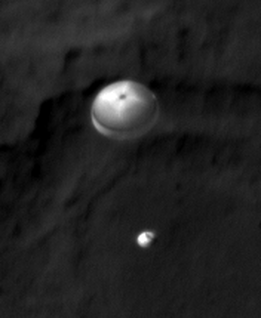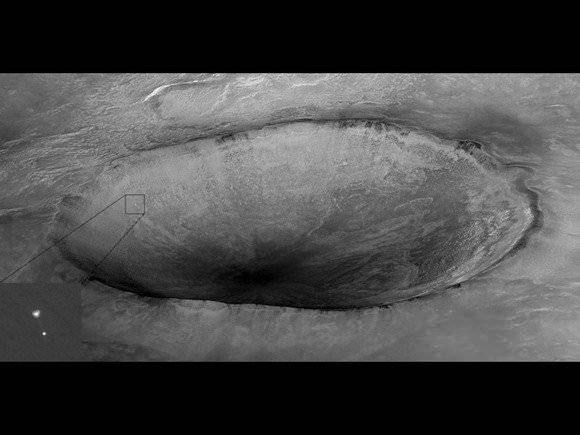[/caption]
Note: This article was updated on Aug. 3 with additional information.
The HiRISE camera crew on the Mars Reconnaissance Orbiter will attempt an audacious repeat performance of the image above, where the team was able to capture an amazing shot of the Phoenix lander descending on a parachute to land on Mars’ north polar region. Only this time it will try to focus on the Mars Science Laboratory’s Curiosity rover descending to touch down in Gale Crater. It will be all or nothing for the HiRISE team, as they get only one shot at taking what would likely be one of the most memorable images of the entire mission for MRO.
“We’re only making one attempt on MSL here,” Christian Schaller of the HiRISE team told Universe Today. “The EDL (Entry, Descent and Landing) image is set up so that as MSL is descending, MRO will be slewing the HiRISE field of view across the expected descent path. The plan is to capture MSL during the parachute phase of descent.”
Schaller is the software developer responsible for the primary planning tools the MRO and HiRISE targeting specialists and science team members use to plan their images.
Last December, when Universe Today learned of this probable imaging attempt, HiRISE Principal Investigator Alfred McEwen confirmed for us that, indeed, the team was working to make it happen. The preferred shot would be to “capture the rover hanging from the skycrane, but the timing may be difficult,” McEwen said.
It would take an impeccable – and fortuitous – sense of timing to get that shot, but since MSL’s EDL won’t happen on a precisely exact timetable, the HiRISE team will take their one shot and see what happens.
“We’ve been gradually updating the exact timing of the sequence over the past couple of weeks as the MSL navigation team, the MRO navigation team and the MRO flight engineering team refines that descent path and MRO slew,” Schaller said via email, “and we think we’ve pretty much got it nailed down at this point. I think it’s a real testament to NASA and its partners that we can even think about doing this.”
HiRISE will actually be taking two images, but the first is a “throwaway” warmup image taken about 50 minutes prior to MSL’s descent, designed to heat the camera’s electronics up to the preferred temperature for getting good image data.
“The warmup image we’re taking is a long-exposure throwaway that we’re taking on the night side of Mars,” Schaller explained. “It’s a 5,000 microsecond per line exposure, compared to a more typical 100 microsecond per line exposure during normal surface imaging. These warmup data will be useless, and we don’t even bother sending them back to Earth; we just dump them from the MRO filesystem once the exposure is complete.”
Schaller said the warmup image starts executing at 04:17 UTC/9:17 PM PDT. The real image starts executing at 05:09 UTC/10:09 PM PDT, centered on 10:16 PM as the time MSL and MRO navigation teams have determined MSL will pass through HiRISE’s field of view.
This image will be an approximately 500 microseconds per line exposure, to match the MRO’s slew rate.
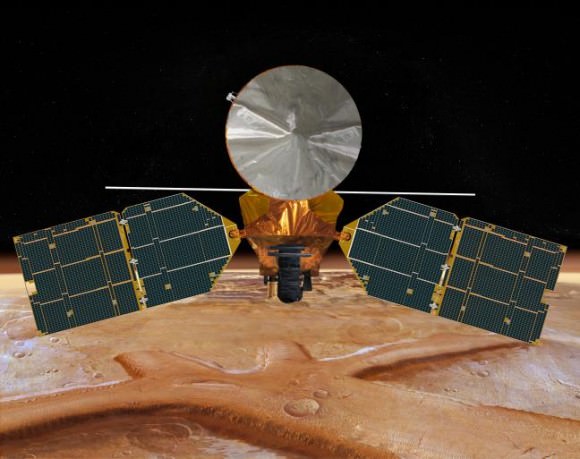
Caption: Artist impression of MRO orbiting Mars. Credit: NASA
UPDATE (Aug. 3): In checking with McEwen, he said that Mars Express and Odyssey are NOT planning to image the descent, but they are supporting EDL via UHF relay, and the plans to use CTX has been dropped.
“HiRISE plans are to definitely attempt the image, unless there is a late upset to the MRO spacecraft,” McEwen said via email on August 3. “The engineers estimate we have a 60% chance of capturing MSL in our image.”
MRO’s Context Camera (CTX) will also be attempting to image Curiosity’s descent, as will NASA’s Mars Odyssey and ESA’s Mars Express and all the spacecraft have been performing special maneuvers to be aligned in just the right place – nearby to MSL’s point of entry into Mars’ atmosphere.
While Odyssey and Mars Express’ cameras may not have the resolving power to capture MSL itself, the powerful HiRISE camera does. However, it has a narrower field of view, so as much skill and planning as this requires, the team will need a little luck, too. But there’s also the CTX.
“CTX has a much larger field of view and will likely capture it,” McEwen said, “but at 20X lower resolution than HiRISE, which should still be good enough to detect the parachute.”
For those concerned about the fuel required for all these orbiters to reposition themselves just to take a few pictures, the expenditure is nothing that isn’t required anyway. All the spacecraft need to be in position to support MSL during the critical EDL event, and the images are pure extra-benefit, if not an incredible exercise for the imaging teams.
So while we’ll all be crossing our fingers for a successful landing for Curiosity, I’m on my way to find a rabbit’s foot or 4-leaf clover for HiRISE.

